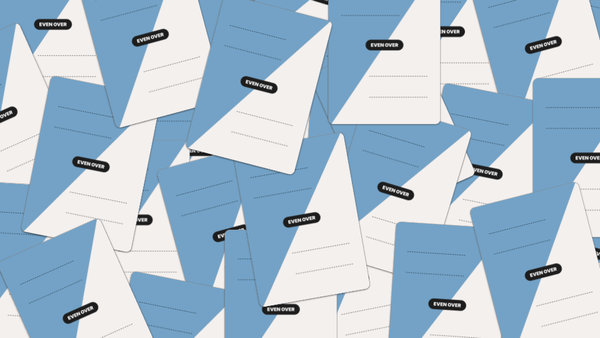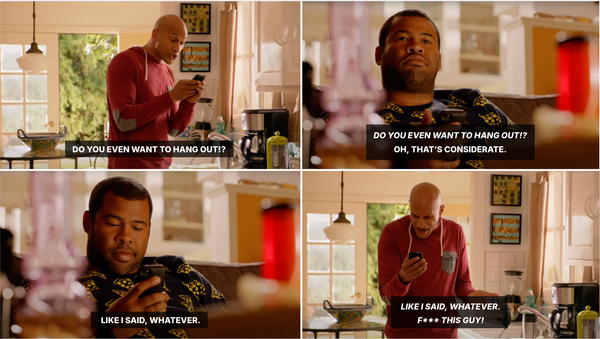How to write a good job description, fast
Start with your team's goals. Break goals into tasks. Assign key tasks to teams, and then break down those into roles and responsibilities.

You could, of course, just start with the job title you’re searching for, and either find a good JD elsewhere, or ask a friend.
We think it’s important to do your due diligence and spend a little bit of time making sure the JD you write connects with your overall departmental goals and company culture. By starting from the top-level goals and moving down, you’ll ensure that you’re not just writing a job description for an open hire.. Writing a good JD is more than just an inspiring list of things to do, and an accurate summary of what's necessary to be successful. Good JDs contribute to the overall coherence of your organization’s structure and design
This shouldn’t take you long – everything listed below took us 15 minutes, total.
For this exercise, imagine you’re a CMO with 13 teams reporting into you: five different Category teams alongside eight functions, including Campaign & Content, Insights & Data Science, Innovation & New Product Development, Brand, eCommerce, Shopper/Retail, Marketing Technology, and Media Buying. Each of these should have a clear “team mission statement” that is assigned to the leader of the team. If you don't have clear mission statements for all those teams, now's a good time to write them down!
We're picking the Campaign and Content team for our example:

Now, break down the top-level goals into core tasks.
For each one of the “team mission statements,” you should be able to break the work down into essential parts. What's needed to bring that mission to life? What capabilities are necessary to achieve the KPI?
For example:

Let’s focus on a Director of Content for now. The role description becomes our headline for the role. Leads the development and production of world-class content across all channels, including digital, social, print and partnerships.
From there, we need to create a list of responsibilities. These are our expectations for how this role will uniquely contribute to the success of this team, and as a result, the success of our overall strategy.
- Develop and execute the content creation strategy for the organization, in line with overall business and marketing goals.
- Lead a team of content creators, including writers, designers, videographers, and other specialists, to produce high-quality, engaging content across all channels, including digital, social, and print.
- Collaborate with the Campaign Planning team to ensure that content supports and amplifies campaign objectives.
- Work with the Brand team to ensure that all content is consistent with the brand identity and messaging.
- Stay up-to-date on industry trends, emerging technologies, and best practices, and identify new and innovative ways to create and distribute content.
- Ensure that content performance is regularly measured and analyzed, and use insights to inform future content creation strategies.
What’s needed in order to pull this off? We need a related list of capabilities that we hope a candidate will bring to the position:
- Strong leadership skills, including the ability to manage and motivate a team.
- Excellent written and verbal communication skills.
- Deep understanding of content creation and distribution, including emerging technologies.
- Strong project management skills, with the ability to manage multiple projects and deadlines.
- Ability to think creatively and strategically about content creation, with a strong focus on audience engagement and business results.
- Excellent data analysis skills, with the ability to measure and analyze content performance and use insights to inform future strategies.
For a higher-level role like “Director”, we’re emphasizing more abstract responsibilities skills that are further from the tactical making of content. But most of these items can be made more abstract and leadership-y, or more specific and tactical – as a result, you can use this template to start to describe the responsibilities of the next level down, and so on.
And a related list of critical career experiences:
- Proven track record of leading and executing successful content creation initiatives, including experience developing and executing content strategies, managing teams, and delivering high-quality content across multiple channels.
- Experience working in a fast-paced, high-pressure environment, with the ability to lead multiple projects and meet tight deadlines.
- Demonstrated experience using data and analytics to inform and improve content creation – both in terms of process and in terms of output.
- Strong understanding of brand management and experience ensuring that content is consistent with brand identity and messaging.
- Exposure to a variety of industries and content types, including digital, social, and print.
- Built and maintained a strong network of industry contacts and a deep understanding of the content creation landscape.
A note here on “Capabilities” and “Experiences”: for most roles, we do not think it’s necessary to limit your organization to specific educational requirements. It’s better to describe the kinds of experiences you hope a candidate will have had before joining your organization.
There are of course some boilerplate sections that are required for all JDs, including compensation ranges, locations, and the like. We recommend adding a section that describes your culture, along with a non-boilerplate description of how you expect candidates to help the company grow and change the existing culture for the better (as opposed to culture fit).

Okay. Now we’ve got a pretty thorough JD – but we should run the whole thing through a bias-checker. For what we’ve written (see the result here), we have a few masculine-coded words, like leading, objectives and analysis, and a few feminine-coded words, like collaborate, support and understanding. It’s up to you what you do with this analysis; in this case, we’d probably leave everything as written.
You’re ready to go!




